Is the Golden Comet chicken the right hen for your flock?
This hybrid chicken was bred for great egg production and is now widely kept on small hobby farms and backyard homesteads. They are pretty hardy chickens and easy to care for. It’s a cheerful and productive little hen that has successfully transitioned into backyard flocks worldwide.
After reading this article, you will know everything there is to know about the Golden Comets. We cover everything from the chicken’s origin to how to tell a male chick from a female chick at hatching, what type of housing they need, and even how many eggs you can prepare to have. We will also tell you when the hybrid hen will start laying eggs and why they stop egg-laying.
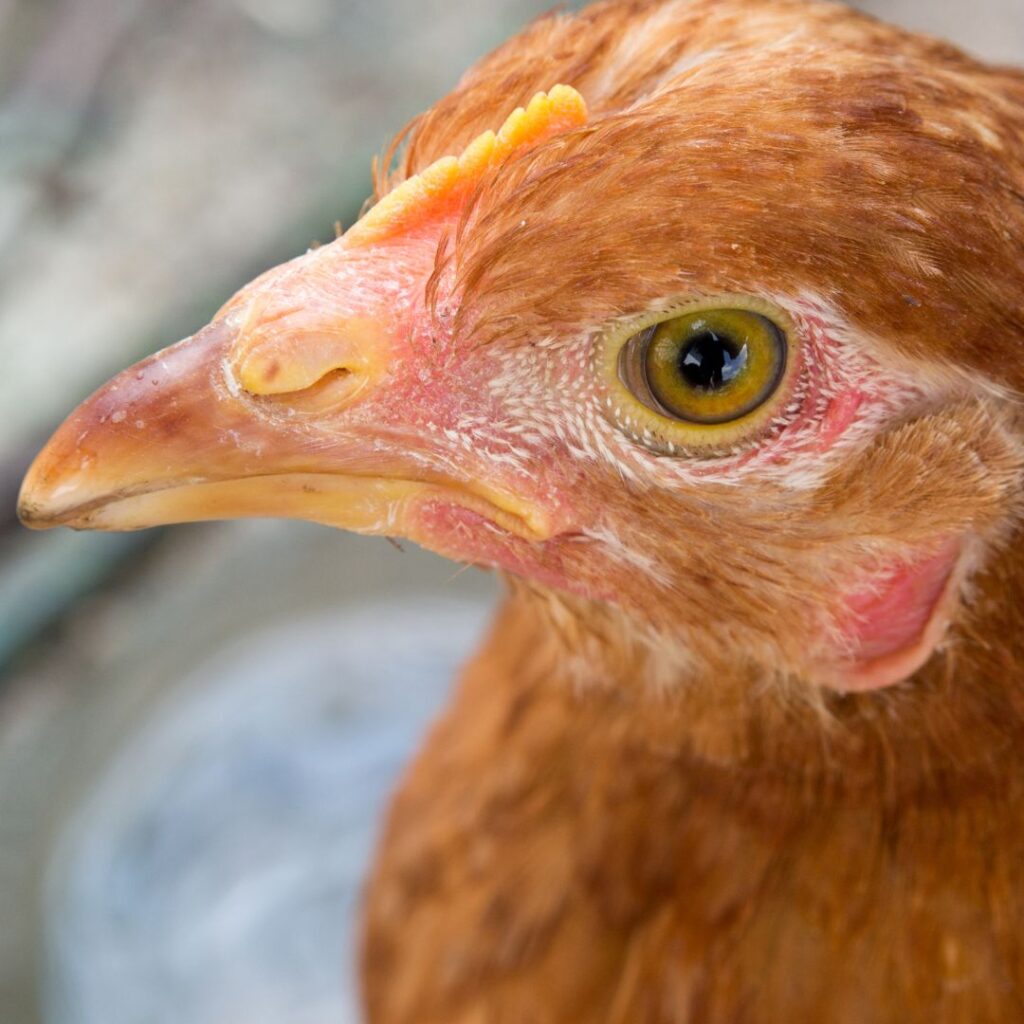
Keep scrolling to learn more about the Golden Comet chicken and decide if it’s the right bird for you and your flock.
What Is A Sex Link Chicken?
Sex link chickens are a specific type of hybrid chicken bred for easy identification. The chicks are hatched with different colors or markings, which allow you to determine their gender quickly. Being able to tell a hen from a rooster early on is an excellent option for beginners, making raising chicks more straightforward.
What Are Hybrid Chickens?
Hybrid chickens are a cross between two different chicken breeds. They are bred for specific characteristics, such as egg production or meat. Hybrid chickens are usually hardier than purebred chickens and are easier to care for.
Golden Comet Origin
The Golden Comet hybrid sex link chicken is a cross between breeds known for their hardiness, egg laying, and sometimes meat quality. Golden comets are known as ‘hybrid sex links,’ meaning they are developed specifically for laying eggs and identifying a hen from a rooster.
While their qualities are similar, different hatcheries call these sex link birds by other names, such as Cinnamon Queen, Golden Buff, and Gold (or Golden) Sex Link.
Golden Comet chickens were initially bred for the commercial egg market in the U.S. The Golden Comet was seen a lot in the 1970s.
As other breeds developed to fulfill the commercial egg market, this hybrid can now be found more commonly in hobby farms and backyards across the U.S.
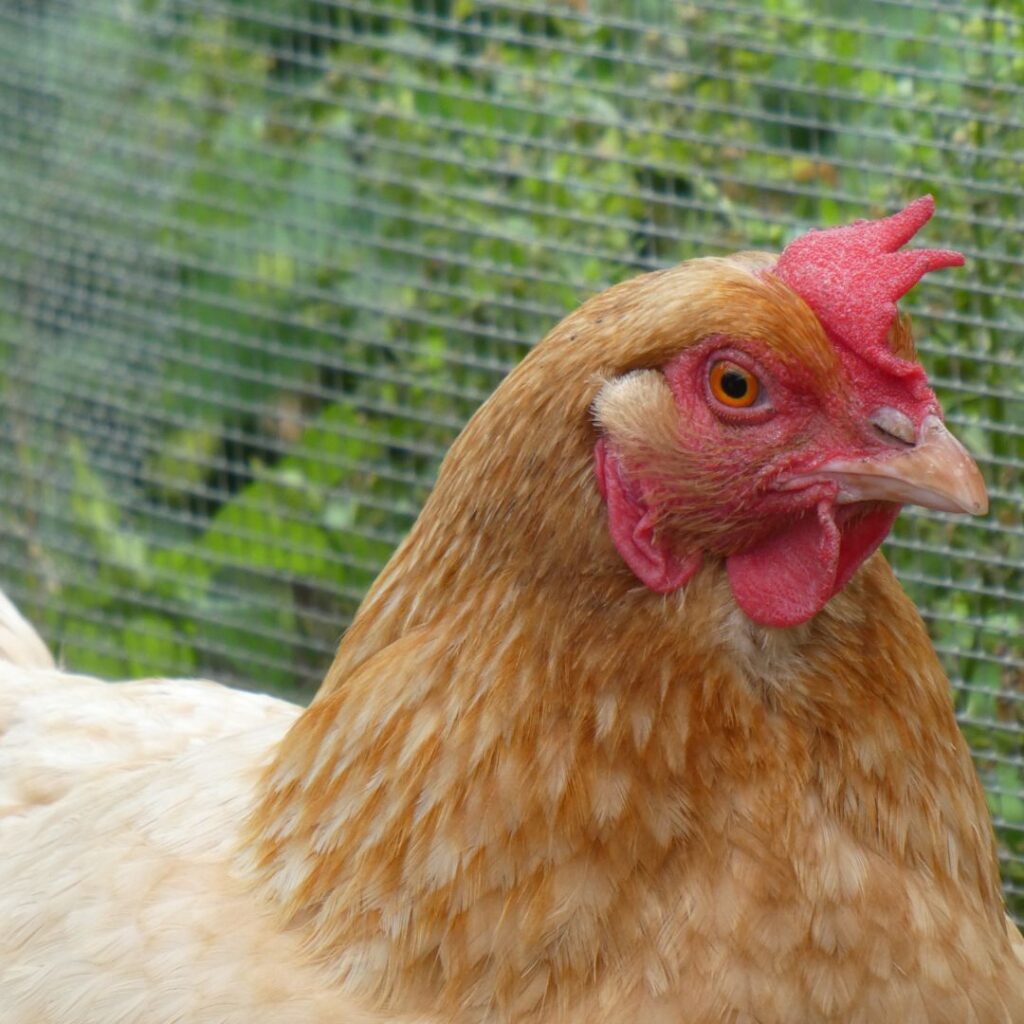
Golden Comet Chicken Appearance
There is no ‘standard’ for appearance for Golden Comet chickens, as they are not a recognized breed by The American Poultry Association. They are known for their fast maturity (aka early at egg laying).
The male Comets will weigh anywhere from 6-8lbs with a maximum weight of 8.5 pounds, while the females weigh anywhere from 4-6 pounds with a maximum weight of 6.5 pounds. Golden Comet pullet weighs around 6 pounds, and cockerels 8 pounds.
Parent birds can factor in the chicken size; check the breed details when ordering from a hatchery for this information. Some Golden Comet hens can be healthy at only four pounds, with roosters maturing closer to six pounds.
The Comets are typically characterized by their single upright comb and brownish-red feathers. They have yellow legs, four toes, and yellow skin.
Males are more prominent than females and have more pronounced red combs and wattles. They may also be all white, mostly white, or the Mahogony Red with patches of white.
Females are full reddish brown/mahogany feathered. They can have a few white feathers scattered about. The Cinnamon queens are similar in all ways, but their coloring, is described as cinnamon-brown feathering; Golden Buffs have golden-brown feathers.
Some hatcheries may cross-breed a R.I. White Rooster, resulting in more ‘white’ feathering in the males.
What do Baby Golden Comet Chicks Look Like?
Male Golden Comet baby chicks are pale yellow, while the female baby chicks have a golden brown coloring with stripes. These color differences make sexing golden comets much easier than other chicken breeds. Besides that, the golden comet babies are like any other adorable handful of downy fluff.
Most backyard chicken keepers know the trouble too many roosters can bring to a flock with territory issues, and most chicken owners are looking for fresh eggs from their birds.
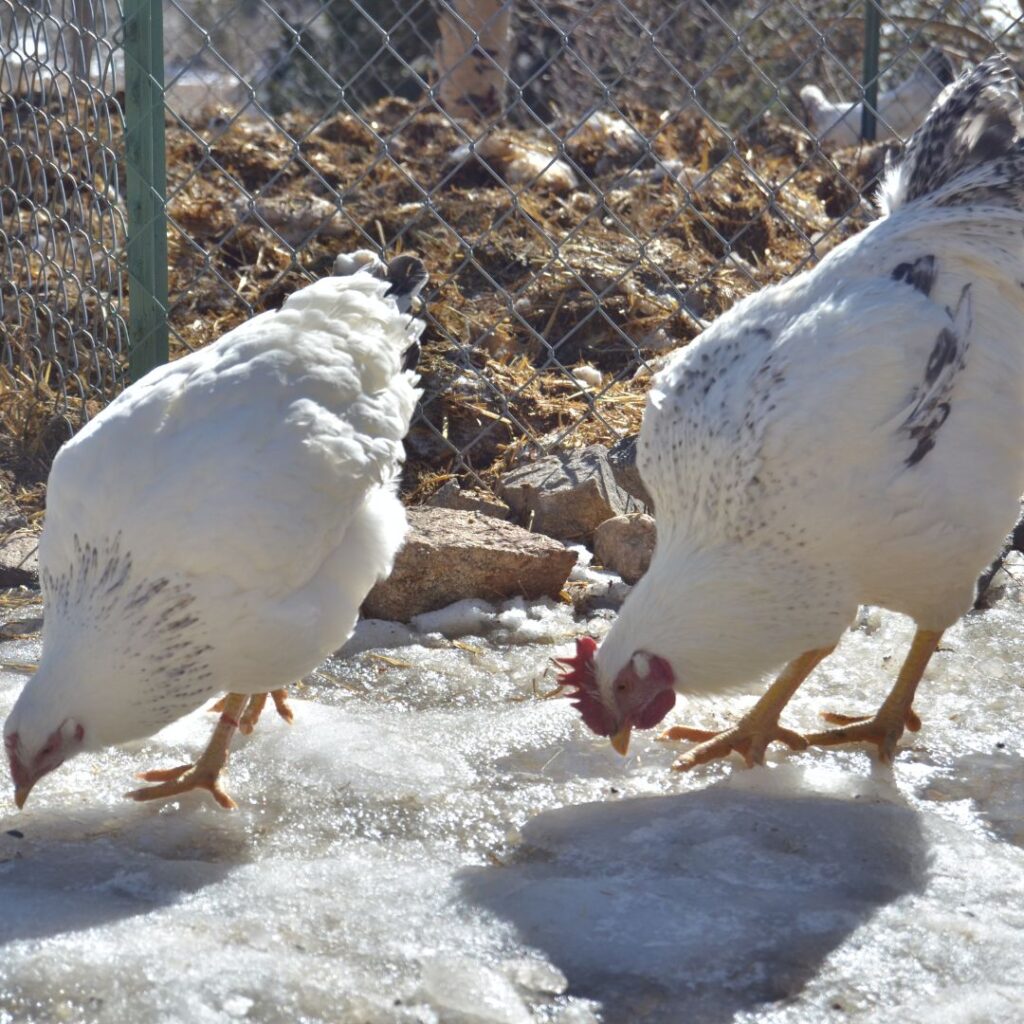
What Two Breeds Make A Golden Comet Chicken?
These are the most common breeds used in cross-breeding to create the Golden Comets
New Hampshire Rooster x White Rock Hen
Cherry Egger Rooster x Rhode Island White Hen
Rhode Island Red Rooster x Silver Laced Wyandotte Hen
Rhode Island Red Rooster x Rhode Island’s White Hen
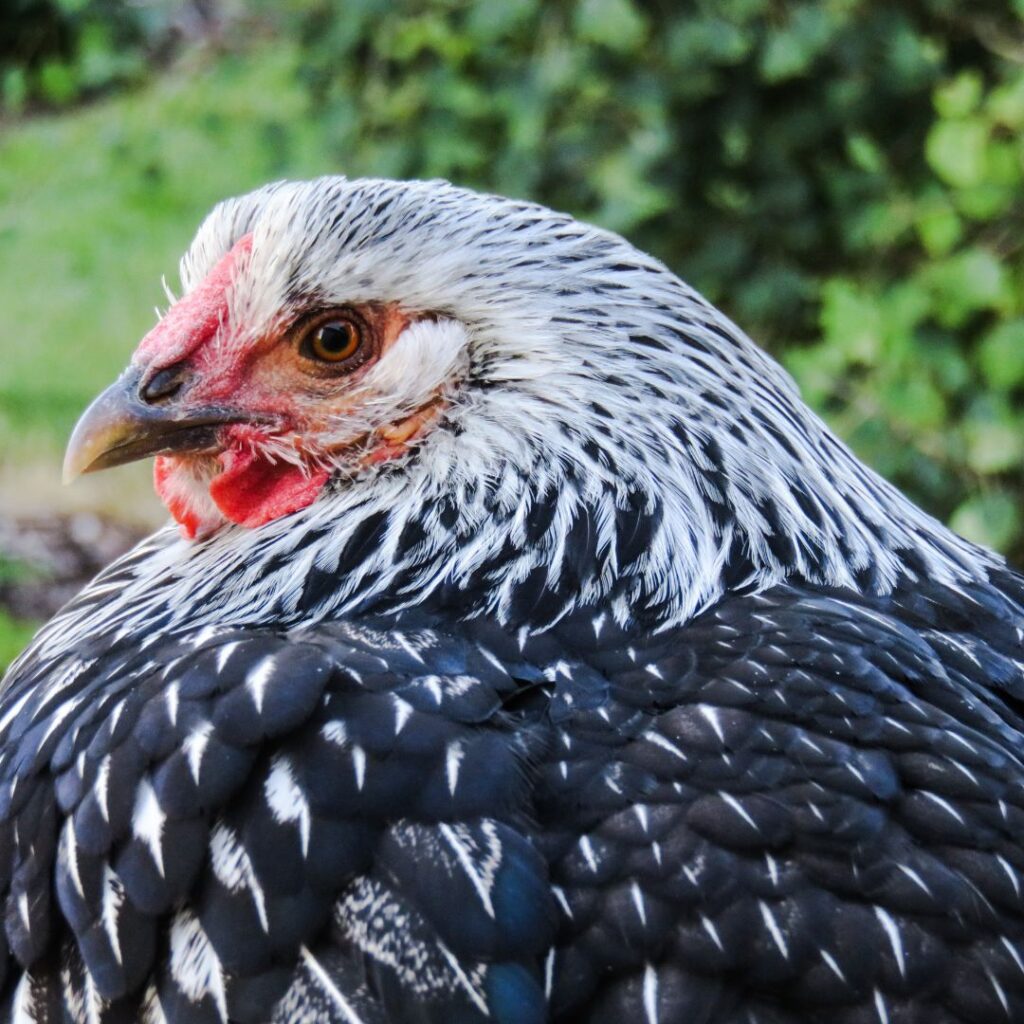
Other Names The Golden Comets Are Known As
When you shop online the hatcheries, you can buy Golden Comet chickens under these names.
- Cinnamon Queen
- Golden Buff
- Gold Sex Link, Gold sexlink (just different spelling), Golden sex link chicken, Golden sexlinks chicken
isa brown vs golden comet
ISA Brown and Golden Comet are sex-linked hybrid chickens known for their prolific egg-laying abilities. While the exact parentage of ISA Browns is unknown, Golden Comets result from a cross between White Leghorns and Rhode Island Reds. The temperament of both breeds is generally docile and friendly.
Although, there are small differences between these two breeds.
Golden Comets tend to be more active and forage more than ISA Browns, which can make them better suited for free-ranging.
On the other hand, ISA Browns are said to be slightly more cold-hardy and disease-resistant than Golden Comets.
Overall, both breeds are excellent choices for backyard chicken-keeping and are known for their excellent egg production.
The Personality of Golden Comet Sex-Linked Chickens
The Golden Comet chicken is a personable and curious hen that is very mellow and doesn’t mind being picked up by people. They quickly become family pets as they are so friendly and gentle. It’s not unusual to find a Golden Comet hopping into the lap of a human owner to enjoy snuggle time or share a snack. Overall, the Golden sex link chicken temperament is an easy choice for beginners.
In a flock situation, they are peaceful flock mates. They generally dislike flock drama or pecking and will move away from trouble.
Golden Comets are better to keep with breeds that are calm and non-aggressive; this will prevent them from getting picked on. Good hens to mix with would be Cochins, Plymouth Rocks, or the Orpington chicken breed.
Caution should always be used when having a rooster larger than a hen, as they can cause physical damage if trying to mate.
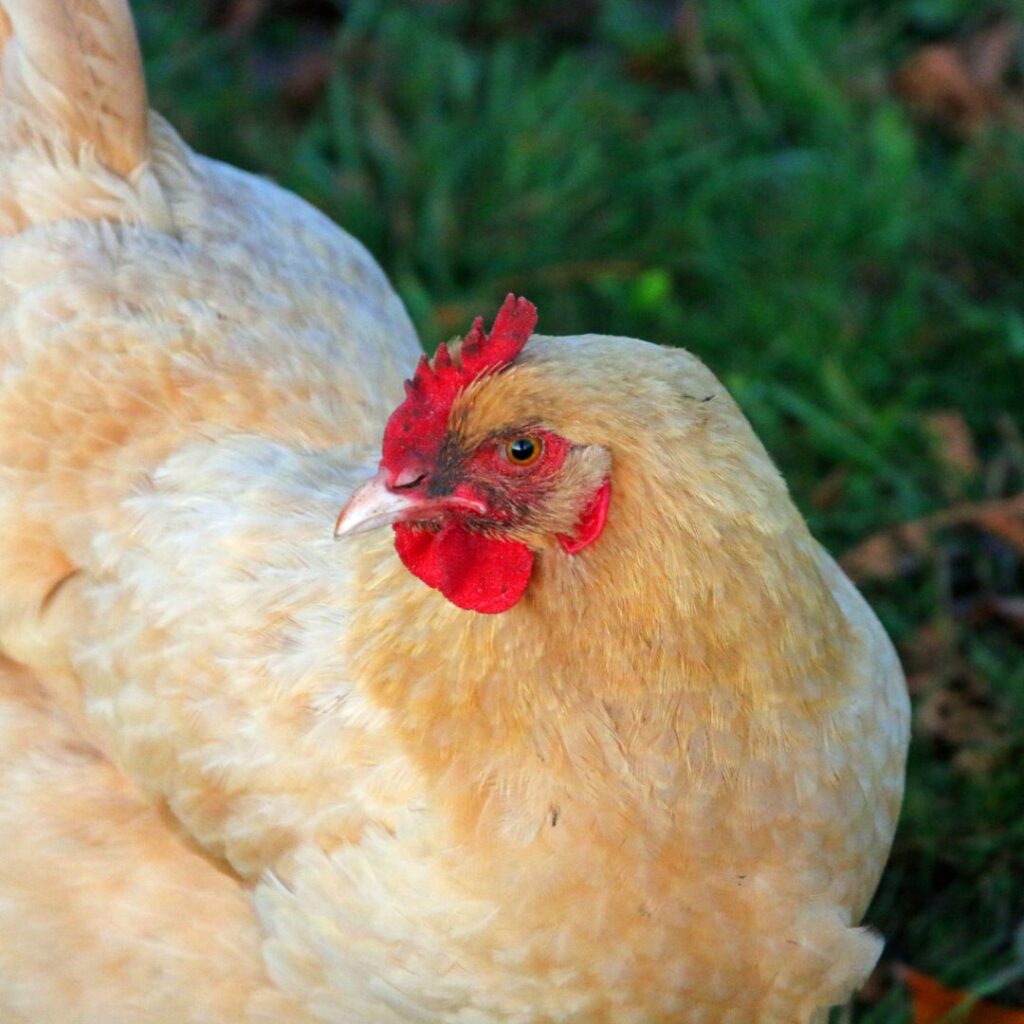
Are Golden Comet Roosters Aggressive?
Roosters are rarely, if ever, aggressive. Like any rooster, they will assert themselves if they feel threatened by a flock member or a predator.
However, because these birds tend to be on the smaller side, putting them in a flock with a larger rooster breed could be dangerous for a Golden Comet.
The recommended ratio of roosters to hens is one rooster for every ten hens.
Are The Golden Comet Chickens Noisy?
Golden Comet chickens are known for being quiet birds. Though they may make some noise while laying, they don’t make much fuss.
Disturbances like loud noises or movement don’t fluster them. Golden Comets are calm and collected, perfect for those looking for a ‘good neighbor’ pet chicken.
About The Egg Production Of Golden Comet Chickens
If you’re looking for a brown egg layer that can produce a high volume of eggs, then the Golden Comet chicken breed is an excellent choice.
Golden Comets were developed explicitly for egg production, and hens start laying sooner than most other chicken breeds. Golden Comets are also fast-growing and maturing, so you’ll be able to enjoy fresh eggs in no time.
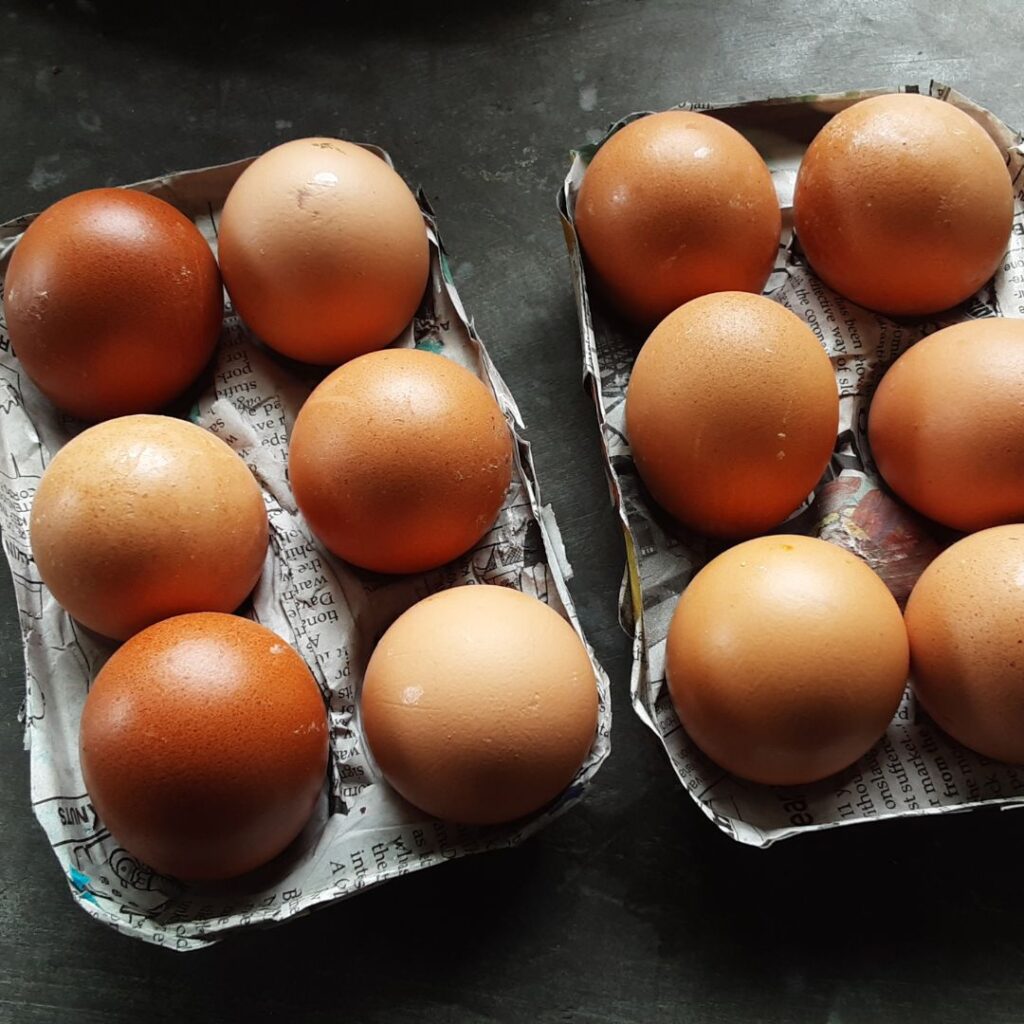
When Do Golden Comet Hens Start Laying Eggs
Most Golden Comet hens will start laying around 16 weeks, much earlier than many other breeds. You will have the occasional late bloomer start as late as 19 weeks. Be sure to have your nesting boxes installed and prepared early.
How many eggs do Golden Comet Hens Lay
You won’t be disappointed with these hens; they are known for being among the top 15 egg layers. The Comets will lay 6 eggs a week. Golden Comets are prolific egg layers, laying 280-320 eggs annually. Golden Comet eggs are brown. They lay extra large eggs.
Don’t worry if you see the first few eggs from your comets are tiny, like some people call ‘fairy eggs.’ These little eggs the first few times are typical in most chickens. They will lay full-sized eggs by the second or third time.
Why Your Golden Comet Is Not Laying Eggs
There can be many reasons your Golden Comet stops laying. Hens require a certain amount of daylight to lay regularly and a proper diet.
There can also be factors like if your hen is molting or broody. Fortunately, these hens rarely go broody. (you’ll want to read up on hatching eggs if you plan on trying to hatch your Comets eggs with an incubator.
There are many more reasons, including egg yolk peritonitis which can be very serious and as simple as age/genetics.
This particular chicken breed may start laying at a younger age than most hens, but they also stop laying much sooner than less productive hens. Golden Comets tend to stop laying by 2 years of age (how long chickens lay eggs). This is one of the most widely seen chicken breeds at rescue shelters.
The Comets live a full yet short time; most will pass on by 3-5 years. An aging hen that is no longer laying is still a great flock leader for baby chicks and helps provide companionship for younger hens. Just because they’re no longer laying doesn’t mean they won’t play an essential role in the flock.
Much more on why hens stop laying eggs can be read in this link.

Some Other Popular Sex Links; Good egg layers Also
Red Star Sex Links
Red Sex Link Chickens rank #1 as the most popular sex-linked hybrid chickens. Most commonly, Red Sex Links are bred from a New Hampshire Red or Rhode Island Red Rooster with a Delaware hen, Leghorn hen, Silver Laced Wyandotte hen, or Barred Rock hen.
The Red Sex Links chickens are hardy, docile birds that lay dependably in all weather conditions, making them a great addition to any flock. These chickens lay between 200 and 280 large – extra large, light-brown eggs per year.
New chicks are easy to identify the sex upon hatch. The female chicks are ‘red’ or darker, and the male chicks are yellow and fluffy down.
Roosters typically have white or light-colored feathers with different colors on their heads and wings. Hens generally are a reddish brown with varying shades. The average hen weighs 5-6 pounds, while the average rooster weighs 6-8 pounds.

Black Sex Links
(sometimes called Black Star chickens and Black Beauty chickens)
These versatile Birds are bred specifically for a large number of eggs as well as for meat. In recent years, there has been a resurgence of interest in chickens as pets, so you may be familiar with this type of chicken and didn’t know what it was called.
Black Star chickens are a favorite among farmers and backyard chicken keepers alike. They are known for their egg-laying ability in vast weather conditions and easy-to-identify black feathers.
These chicks are born all black, with male chicks having a white spot on their head.
Black sex links are created by crossing Barred Plymouth Rock hens with New Hampshire or Rhode Island Red roosters.
The average weight for a Black Sex Link hen is 6 pounds, and 8-9 pounds for roosters at maturity. They are characterized by their black legs and light yellow skin. In addition, they have red wattles and combs. Their body resembles the Barred Plymouth Rock chicken.
The roosters will have a similar barring as the Plymouth Rocks. They’ll have some reddish-brown feathers mixed in as well. Females have an amber coloring in the feathers on their necks.
With proper care, Black Sex Link Chicken hens can lay about 220-280 eggs in a year. Whether you’re looking for a reliable laying hen or a beautiful addition to your flock, black sex links are a great choice.

Note: Neither the Black Star Sex Link nor the Red Sex Link is recognized as official breeds by the American Poultry Association.
The Chicken Coop Size for Your Gold Sex Link Chickens
Golden Comet chickens tolerate confinement well but still need a proper environment to roam about. A good “hen house” and run is essential for any backyard chicken flock.
A chicken coop and run are essential to providing your Golden Comets with a safe and comfortable home.
A chicken coop with an attached run gives your chickens space to move around and explore without feeling threatened by predators or other animals. It also helps keep them safe from weather conditions such as rain or snow.
Providing your chickens with their own enclosed space means they can lay eggs in a clean and secure environment.
Coop Space – 4 square feet per Golden Comet chicken is perfect inside your hen house. You’ll need to size up to accommodate your largest chicken breed if you have other breeds.
Roosts – Your hens need a place to sleep; roosts should be about 10″ – 12″ per chicken. Keep the materials with rounded edges and not too side so your smaller chickens can comfortably settle into their roost.
Nesting boxes – It’s important to have 1 nesting box for every 4 hens. Set these up early so your girls can get familiar with them. Comet hens start laying early, so you’ll want to have these installed and ready for your brown egg layers before 16 weeks.
Feeders and Waterers – Fresh water and fresh and clean food are essential to any chicken. To keep your waterers and feeders from filling up with ‘litter’ or getting buggy, hang feeders from a chain while allowing them to be about 4″ above the ground. In a pinch, you can put it up on a cement block. Waterers can be placed on a cement block to keep litter out. Clean these out routinely.
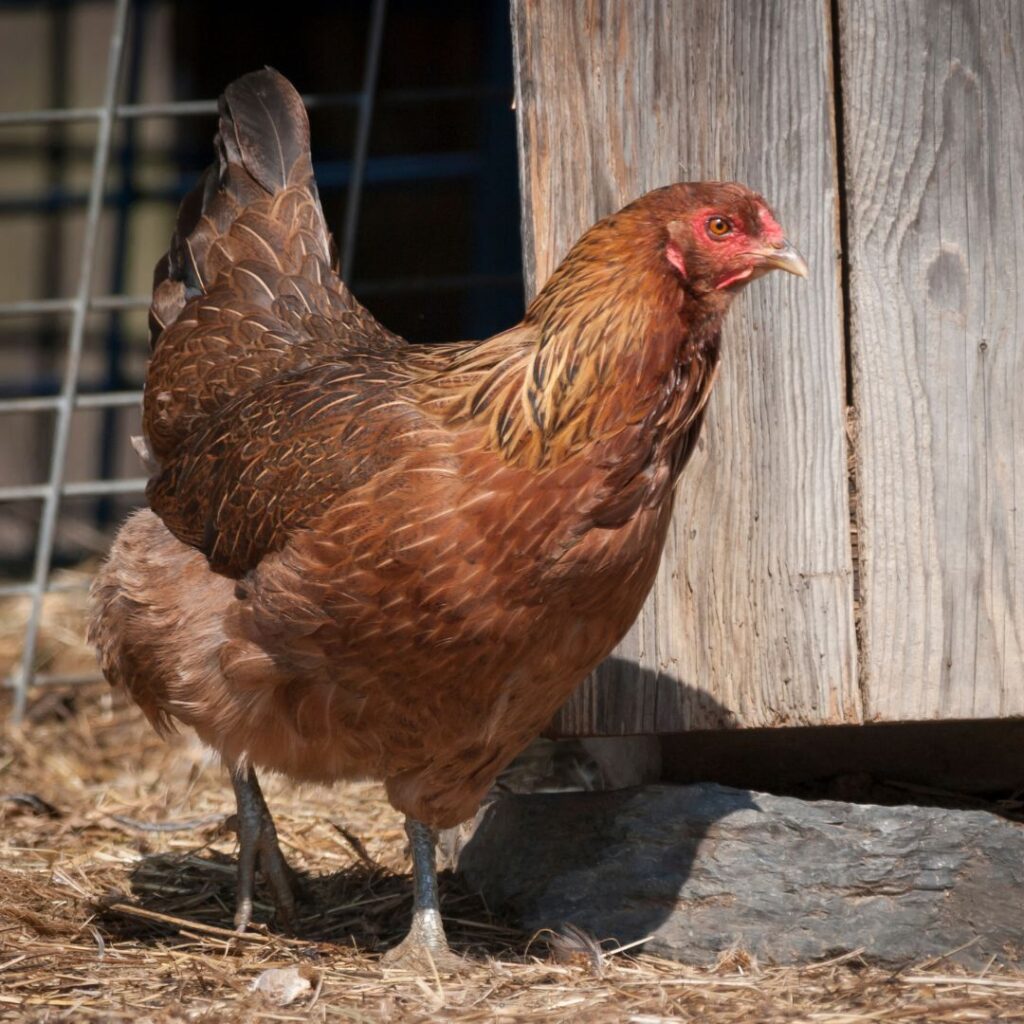
The Chicken Run
Space – To keep your backyard flock healthy and happy, they need plenty of space to roam. Provide no less than ten square feet per chicken for their outdoor run/yard space.
Chickens in an undersized run are likelier to get bored and pick on one another. Unsanitary conditions are also more common in smaller run areas, which can lead to health problems.
In the case of chicken runs, bigger is always better.
Perches – Perches are a great way to give your flock various views while adding lateral space to the run area.
You can do this with large fallen branches you find in your yard or by nailing in some shelving-type structure to the side of the coop. Other ways to add height can be by adding an upside-down bucket for some height. This is a great way to reduce boredom for your golden sex link chickens.
Fencing height – Fencing serves two primary purposes: keeping chickens in and predators out. The best way to do this is to install a 6′ high fence and topped with hardware cloth to prevent hawks, owls, and any other overhead acrobatic predators.
Tip: This is a great way to repurpose if you know someone is throwing out old fence panels or an old dog kennel. Just be sure the lower section is screened with fabric or screening for baby chicks; they can easily hop right through a regular fence hole.
Dust Bath – A dust bath should be considered as essential as food and water for domestic chickens as it’s part of their primary care needs. It’s simple to provide a space in the outdoor run filled with contractor sand mixed with diatomaceous earth, even sprinkle in some herbs.
Your chickens will lay and spread their wings in this, allowing the dry mixture to get down to the skin and rid themself of pesky mites and lice. The plus side is you get a chicken with shiny bright feathers that look fresh from the spa.
Not much can be more uncomfortable and unsightly than a chicken with mites and lice. These bugs are miserable and carry diseases (and yes, they can jump to humans!)

Free-Range and Foraging With Golden Comets
There are hundreds of different chicken breeds out there. Each has its own unique characteristics. Some chickens are better egg layers, while others are better at meat production. Some breeds are known for being friendly and social, and others are more independent and aloof.
One characteristic that all chickens share is the need to forage. Free-ranging chickens can scratch and peck at the ground, looking for insects, grubs, ticks, and other tasty morsels, adding to the Golden Comet menu of nutritious treats. And while all chickens enjoy this natural behavior, some breeds are better at it than others. Golden Comets, for example, have proved to be excellent foragers.
While these are smaller chickens, we recommend proper supervision while allowing your flock to free range. The human presence is usually a good deterrent for predators.
Golden Comets; Cold-Hardy Chickens & Heat Tolerance
They are a backyard chicken keeper’s dream come true! As a cross between a R.I. Red and White Rock hen, they have many of the best qualities of both breeds. They are adaptable and resilient, tolerating a wide variety of temperatures.
Of course, as with most single-comb chickens, you’ll want to keep an eye out for frostbite. But overall, Golden Comets are pretty hardy birds and don’t generally have many health problems. Comets are also known to be able to lay year-round (throughout the winter).
Coop Prep – While your Golden Comet chicken can handle extreme cold weather, you still need to be sure your coop is secure and allows for safe conditions. Winter and summer prep is very similar.
Be sure your coop is sealed from any cracks or small openings. This not only helps prevent cold winds from getting indoors but also helps prevent bugs and predators from invading the coop space. Winter insulation can be tarps or tar paper wrapped around the outside, as well as placing straw bales around the foundation of the structure.
Proper ventilation will prevent respiratory problems in your flock, reduce heat in the summer, and improve warmth in the winter. Additional summer ventilation can include adding screen doors or windows.
Waterers – Fresh water can be challenging in the winter. Be sure to change out waterers frequently, as they freeze quickly. Consider purchasing a heated waterer if you have a safe and secure electrical source.
Summer water can have ice cubes placed in to help keep the water fresh and cool.
Treats – All chickens love fresh vegetables, even scraps from the kitchen. In the summer, you can freeze some in a container and put out the giant veggie and fruit-filled ice cube for your Comet’s enjoyment.
Winter treats can be fresh fruits and veggies cooked up and served warm.
Frostbite – Keeping your chicken coop free from moisture with proper ventilation will help reduce this risk; however, the best way to prevent frostbite is to place a dab of petroleum jelly on the combs and wattles of your chickens regularly.
Seeing as the Golden comet chickens don’t mind being handled (they like it) this shouldn’t be a struggle to get the petroleum jelly placed on them.
Read more about preparing your chicken coop and run and chicken care in the winter in this article.

Are The Golden Comet Chickens Good For Urban (City) Flocks?
Golden Comets are generally quiet birds. They will cluck when they lay eggs; otherwise, they are not particularly noisy. The hens are especially quiet, which makes them good birds for urban or suburban areas where noise levels can be an issue.
They also handle confinement and enjoy free-ranging, making the Golden Comets an ideal chicken breed for Urban (city) flocks.
Life Expectancy of the Golden Comet Chicken
The Golden Comet Chicken is a popular breed known for its ability to lay large numbers of eggs. However, this prolific egg production comes at a cost, as Golden Comets typically have shorter lifespans than other chicken breeds.
On average, Golden Comet Chickens live for three to five years, although some may live longer if they are well cared for. The high rate of egg production takes a toll on their bodies and eventually leads to organ failure.
While the lifespan of a Golden Comet Chicken may be shorter than that of other chickens, they can still provide many years of enjoyment and backyard companionship and produce hundreds of eggs in their lifetime.
Rhode Island Reds VS Golden Comet
The Rhode Island Red chickens are larger and more aggressive than comets. The Comets will generally start laying sooner and more than a Rhode Island Red. They are both equally cold hardy breeds. The Rhode Island Reds outlive the Golden Comets by a few years.
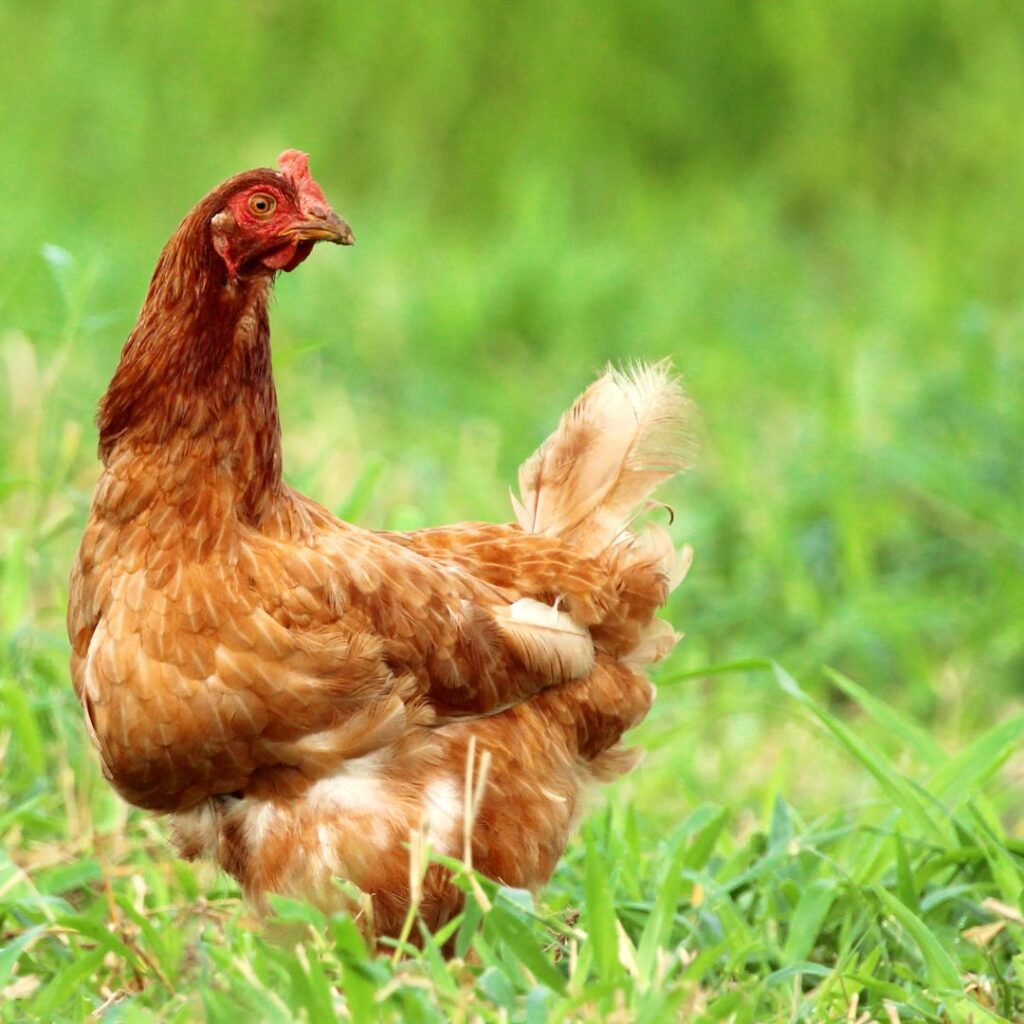
Are the Golden Comets Right For Backyard Chicken Keepers?
If you are a backyard chicken keeper or thinking about becoming one, you may wonder what type of chicken is right for you. There are many different breeds of chickens, each with its unique traits.
One breed that is often recommended for backyard chicken keepers is the Golden Comet. Golden Comets are known for their docile nature and outstanding egg production. They are also active foragers, which means they are low maintenance and self-sufficient when allowed to free-range. This makes them ideal for beginners in the backyard or small hobby farm.
However, prolific egg production has its downside: the body wears out quickly. In its favor, the Comet is a smaller chicken and eats less feed. She is also an excellent little forager, keeping feed bills to a minimum, which is a plus when raising chickens.
Golden Comet chickens are suitable for almost any climate and make an excellent choice for beginning chicken keepers. With their friendly dispositions and excellent egg production, Golden Comets make wonderful chickens and a great addition to any backyard flock.

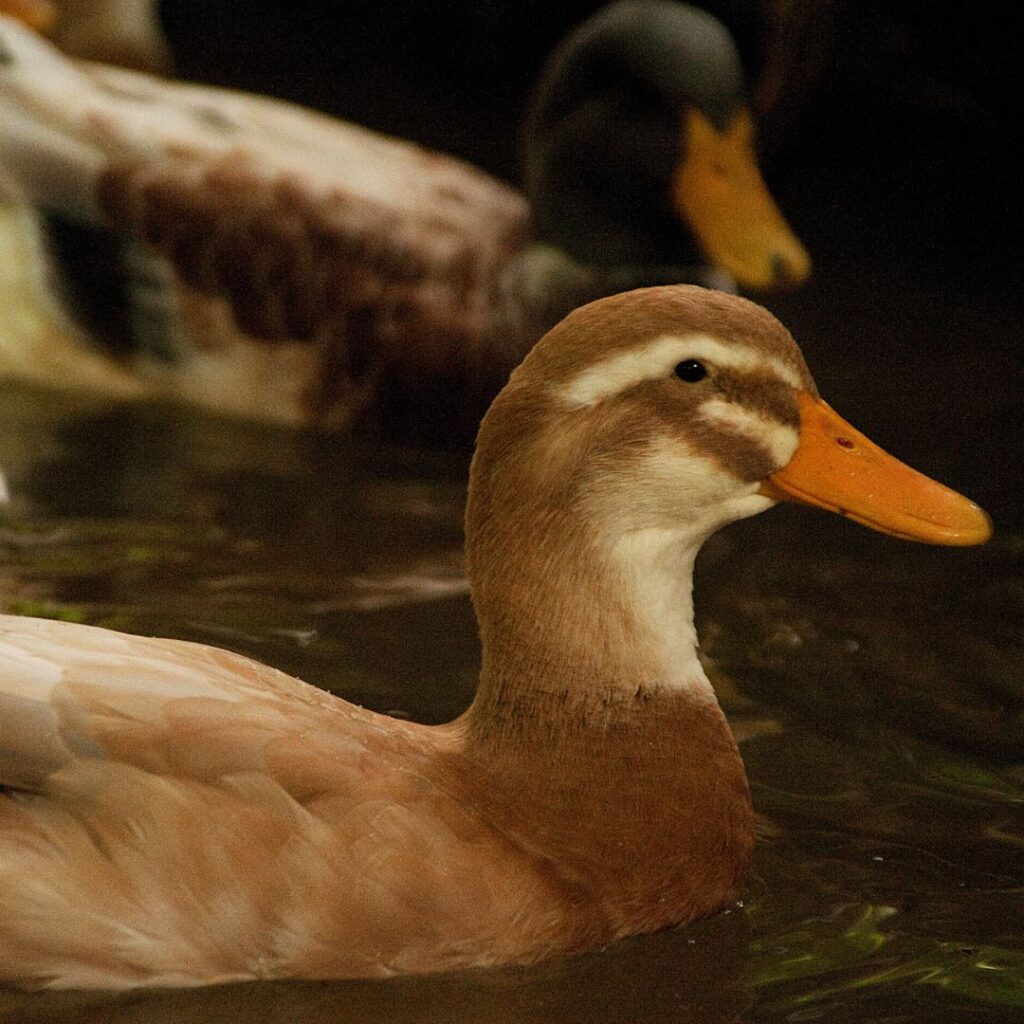
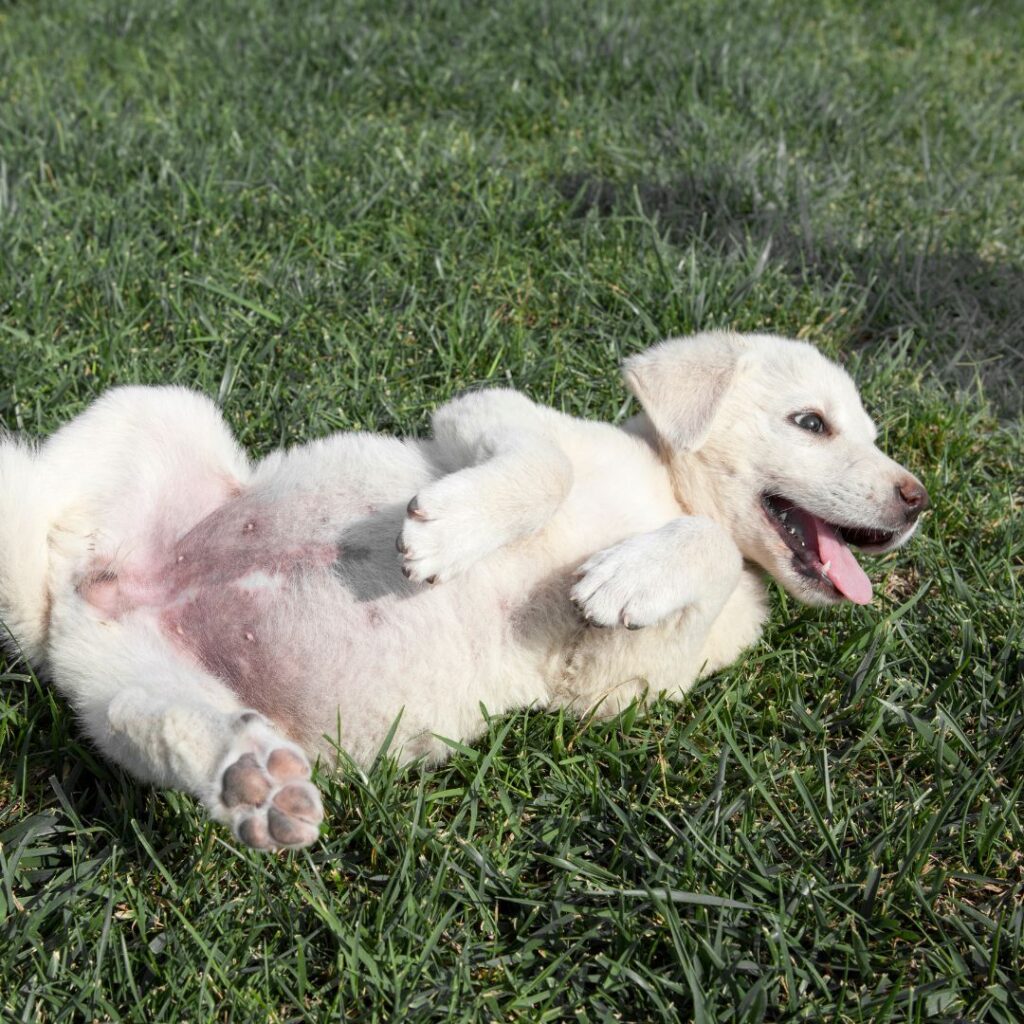
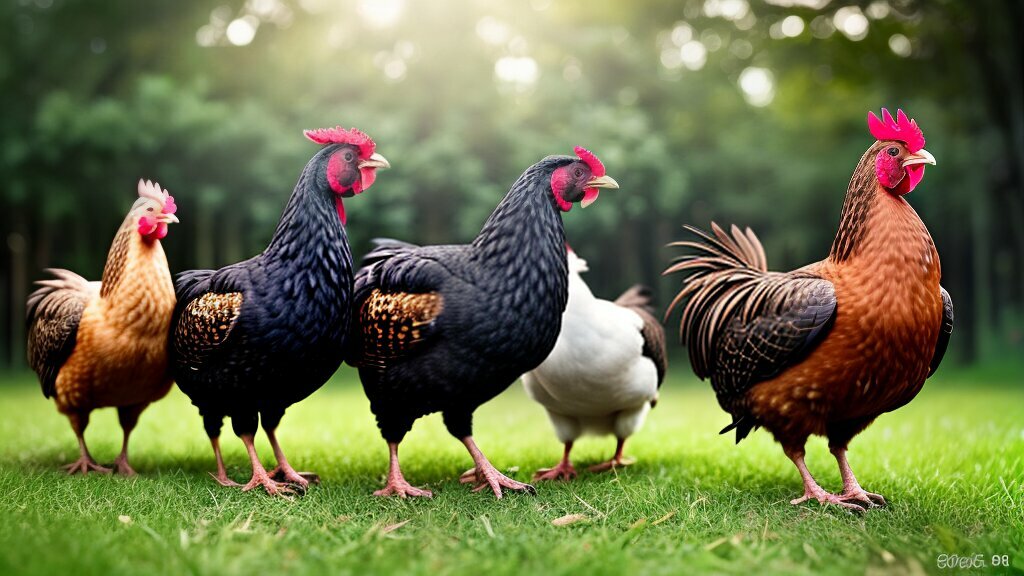
Pingback: The Black Star Chicken; About Black Sex Links & Sex Link Chickens
Pingback: New Hampshire Chicken; New Hampshire Reds
Pingback: 19+ Friendliest Chicken Breeds For Pets